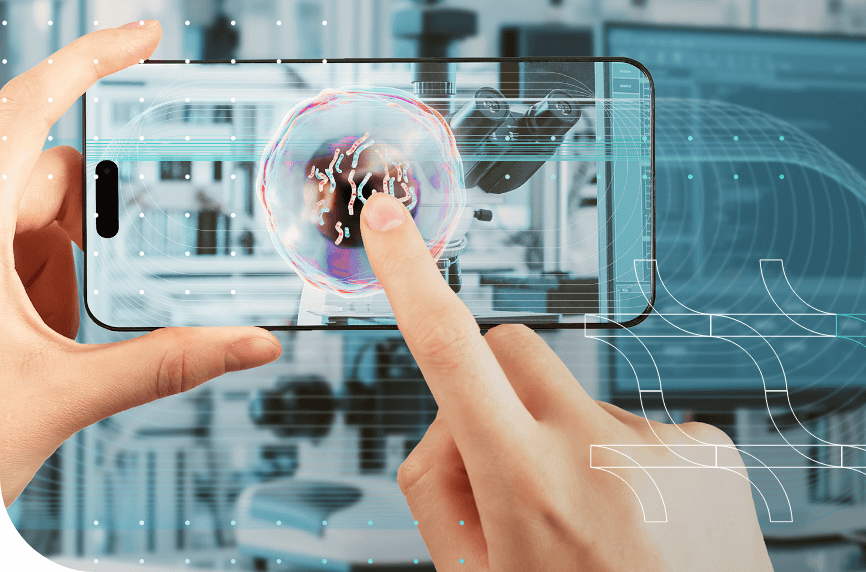Augmented Reality (AR) software is a type of application that blends digital content with the real world, enhancing the user’s perception and interaction with their environment. Unlike virtual reality (VR), which creates a completely immersive virtual environment, AR overlays computer-generated images, sounds, and other data onto the real world. This article explores what AR software is, how it works, its various applications, and its impact on different industries.
Understanding Augmented Reality Software
Augmented Reality software is designed to integrate virtual elements into the user’s real-world environment through devices such as smartphones, tablets, smart glasses, and AR headsets. These digital elements can include 3D models, animations, videos, text, and sound, which enhance the user’s perception and interaction with the surrounding physical world.
How AR Software Works
AR software typically works through a combination of the following components:
- Sensors and Cameras:
- Devices equipped with AR software use sensors and cameras to capture the real-world environment. These inputs help the software understand and map the surroundings.
- Processing Power:
- AR software requires significant processing power to analyze the input from sensors and cameras, track objects, and render virtual elements in real time. Modern smartphones and AR headsets are equipped with the necessary computational capabilities.
- Computer Vision:
- Computer vision algorithms process the captured images to identify and track objects, surfaces, and planes in the real world. This is crucial for accurately placing virtual elements in the correct position and orientation.
- Rendering:
- The software generates the virtual elements and overlays them onto the real-world view. This requires precise rendering to ensure that the digital content blends seamlessly with the physical environment.
- User Interface:
- AR software includes user interface elements that allow users to interact with the augmented content, such as buttons, menus, and gesture controls.
Applications of AR Software
- Gaming:
- AR has revolutionized gaming by bringing virtual elements into the real world. Games like Pokémon GO use AR to make digital creatures appear in physical locations, creating an immersive gaming experience.
- Education:
- AR software enhances learning by providing interactive and immersive educational experiences. For instance, students can explore 3D models of the human body or historical landmarks, making learning more engaging and effective.
- Retail:
- Retailers use AR to enhance the shopping experience. Apps allow customers to visualize how furniture, clothing, or makeup will look in real life before making a purchase, reducing the likelihood of returns and increasing customer satisfaction.
- Healthcare:
- In healthcare, AR is used for medical training, surgical planning, and patient care. Surgeons can use AR to visualize complex procedures and improve precision during operations.
- Manufacturing and Maintenance:
- AR software aids in manufacturing and maintenance by providing workers with real-time information, instructions, and guidance. This can improve efficiency, accuracy, and safety in industrial environments.
- Real Estate and Interior Design:
- AR allows potential buyers to take virtual tours of properties and visualize interior design changes in real time, helping them make informed decisions.
- Navigation:
- AR navigation apps overlay directions and information onto the real-world view, making it easier for users to find their way in unfamiliar environments.
Benefits of AR Software
- Enhanced User Experience:
- AR provides an immersive and interactive user experience, making activities like learning, shopping, and gaming more engaging and enjoyable.
- Improved Decision-Making:
- By visualizing virtual elements in the real world, users can make better-informed decisions, whether it’s choosing furniture for a home or planning a surgical procedure.
- Increased Efficiency and Productivity:
- AR applications in industries such as manufacturing and healthcare can streamline processes, reduce errors, and improve productivity.
- Competitive Advantage:
- Businesses that adopt AR technology can differentiate themselves from competitors by offering innovative and cutting-edge services.
Challenges and Future Prospects
Despite its numerous advantages, AR software also faces challenges such as high development costs, the need for powerful hardware, and issues related to privacy and security. However, as technology advances and becomes more accessible, these challenges are expected to diminish.
The future of AR software looks promising, with ongoing developments in areas like 5G connectivity, AI integration, and more sophisticated sensors and cameras. These advancements will likely lead to even more immersive and seamless AR experiences, expanding the technology’s applications across various industries.
Conclusion
Augmented Reality software represents a significant leap in how we interact with the digital world. By merging virtual elements with our physical environment, AR enhances our perception, provides valuable insights, and creates engaging and interactive experiences. As AR technology continues to evolve, its impact on industries such as gaming, education, healthcare, retail, and beyond will only grow, paving the way for a more integrated and immersive digital future.
